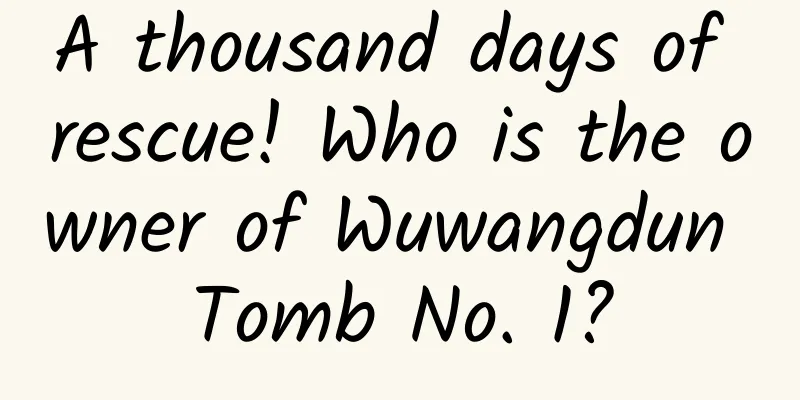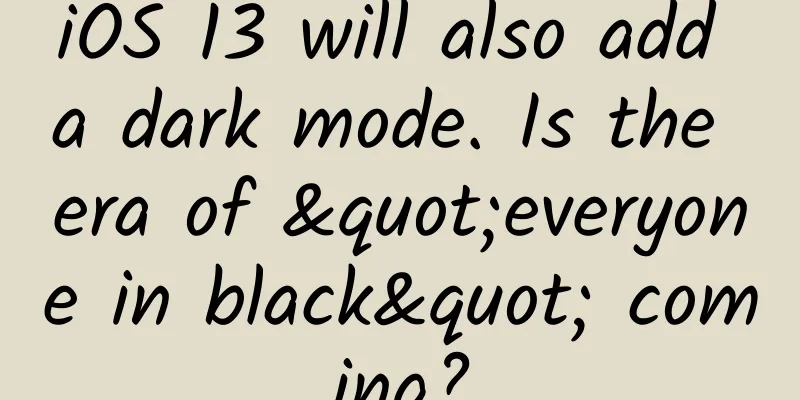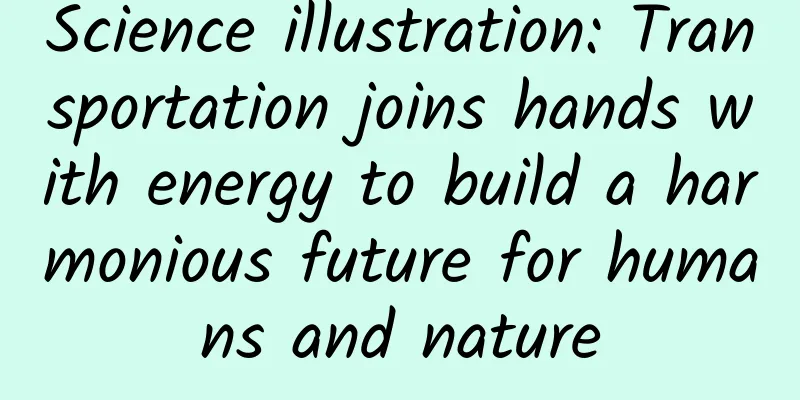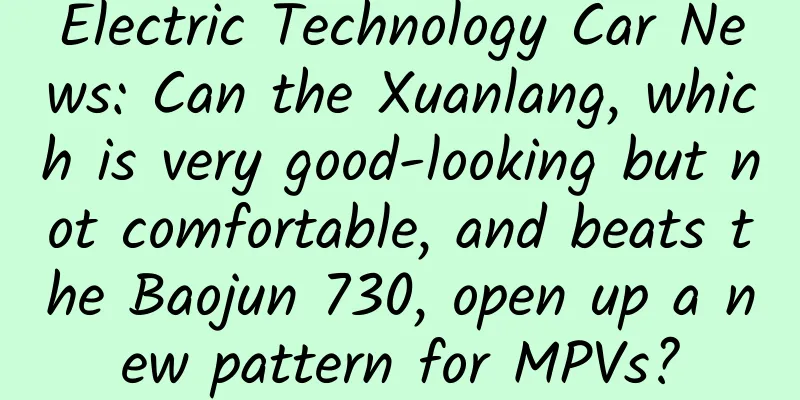A thousand days of rescue! Who is the owner of Wuwangdun Tomb No. 1?

|
A 1.92-meter-high drum stand with a phoenix-shaped and tiger-shaped seat, a large tripod with a rough diameter of more than 88 centimeters, and a coffin chamber cover with nearly a thousand words inscribed on it... Recently, an important progress working meeting on the "Wuwangdun" major project of "Archaeology China" was held in Huainan City, Anhui Province. The interim excavation results of Wuwangdun Tomb No. 1 were released on site for the first time, confirming that Wuwangdun Tomb is the largest, highest-level, and most complex large-scale high-level tomb of the Chu State that has been scientifically excavated to date. Who is the owner of Wuwangdun Tomb No. 1? What is the reason for the archaeological excavation? What unique cultural relics have been discovered? What are the characteristics of the other royal tombs of the Seven Kingdoms of the Warring States Period? A thousand-day rescue excavation Wuwangdun, located in Tianjia'an District, Huainan, is a large ancient tomb with a base diameter of more than 130 meters and a height of 14 meters. In 1981, it was designated as a key cultural relic protection site in Anhui Province. "This large tomb is in a straight line from east to west with the Chu royal palace and a large ancient tomb that is also a provincial protected unit and identified in documents as the tomb of Chunshenjun. To the south is the Li Sangu Mound that was looted in the 1930s. The central axis passes through two peaks of the nearby Shungeng Mountains. According to archaeological surveys since the founding of New China, there are many tombs of Chu nobles around the two axes centered on Wuwangdun, reflecting that the owner of Wuwangdun had long-term plans and considerations." Shen Hanqing, researcher and former director of Huainan Museum, introduced. Li Sangu Dui is located in Xiejiaji District, Huainan City. In the 1920s and 1930s, a large number of bronze artifacts were unearthed nearby and sold for profit, some even scattered overseas, attracting the attention of cultural relic dealers and fueling the trend of tomb robbing. In 1933, a severe famine occurred here. In the name of disaster relief, local gentry Zhu Hongchu and others gathered together to carry out large-scale excavation of Li Sangu Mound. Although most of the unearthed cultural relics were confiscated and transported to the provincial capital the following year after the incident was discovered by the government, a small number of them were still resold by merchants. In 1938, warlord Li Pinxian once again spent three months excavating and looting Li Sangu Mound. The most eye-catching unearthed cultural relic in Li Sangudui is the Zhuke Ding, the treasure of the Anhui Museum. It is 113 cm high, 87 cm in diameter and weighs about 400 kg. It has inscriptions such as "Zhuke" and "Anbang". It has long been ranked as the second largest ancient bronze tripod in China, second only to the Houmuwu Ding of the Shang Dynasty. "Through drilling and cleaning by the Anhui Provincial Cultural Relics Team in 1981, it was found that this large Jia-shaped tomb is 41.2 meters long, 40.2 meters wide and 18 meters deep. There are 9 steps below the tomb entrance, which are gradually stepped inward. There is a 22.4-meter-long sloping tomb passage on the east side." Gong Xicheng, a researcher at the Anhui Provincial Institute of Cultural Relics and Archaeology and the leader of the archaeological excavation team of King Wu's Tomb, said that the inscriptions on the artifacts unearthed from Li Sangu Dui directly pointed out that the owner of the tomb was King You of Chu. Wuwangdun, 14.6 kilometers due north of Li Sangudui, may have come into the sight of some criminals for this reason. It is reported that a tomb-robbing hole appeared in Wuwangdun in 1987. In 2015, a tomb-robbing gang tried to rob Wuwangdun, but initially stopped due to insufficient funds and the discovery of the tomb-robbing hole. Later, they invited Lao Xia, a "tomb-locating expert" with considerable influence in the "circle", to rob again, and finally succeeded and stole a large number of cultural relics. After the incident in 2018, the Huainan Public Security Bureau solved the case and recovered more than 70 important cultural relics that year. Judging from the types of these cultural relics, the tomb-robbing gang entered the coffin chamber where musical instruments were placed. A tomb robber once told the police that after draining the water from the coffin chamber, they used an electric saw to try to break through the wall to enter the main tomb chamber, but gave up because the drill hole was too small. However, through the searchlight, "they saw that the walls were covered with murals." "The interrogation results and on-site investigations showed that Wuwangdun has been severely damaged, the underground burial environment of the cultural relics has changed dramatically, and there are huge hidden dangers to the safety of the cultural relics. It is urgent to carry out scientific archaeological excavations to rescue the underground cultural relics." Gong Xicheng introduced that in November 2019, the State Administration of Cultural Heritage approved the archaeological excavation plan for Wuwangdun. In 2020, the plan was included in the key projects of the "Archaeology China" subject. After several months of preliminary preparation, the excavation of Wuwangdun Tomb No. 1 began in September 2020. By November 2023, the excavation of the burial mound and filling soil was completed, and the bamboo mat laid on the coffin chamber was extracted in December. The identity of the tomb owner is about to be revealed According to the work plan approved by the State Administration of Cultural Heritage, the dismantling and extraction of the coffin covers will begin on March 7, 2024. As of March 27, all four layers of coffin covers have been safely extracted, totaling 443 pieces, with a total weight of about 153 tons. The second phase of the excavation of the coffin chamber has now begun, that is, the excavation and cleaning of the interior of the coffin chamber. Through continuous archaeological work, cultural relics workers have gained a series of new insights into Wuwangdun. "There is an independent cemetery outside the No. 1 Tomb of Wuwangdun. It is nearly square in plan and surrounded by moats with a circumference of about 5 kilometers. The total area of the cemetery is about 1.5 million square meters. There are relics such as chariot and horse pits, burial tombs, and sacrificial pits in the cemetery. Among them, the chariot and horse pit is located on the west side of the main tomb. It is about 148 meters long from north to south. It is the longest chariot and horse pit known in the Chu tombs." Gong Xicheng said. Wuwangdun Tomb No. 1 is the largest tomb in the cemetery. It is located on a raised high ground in the north-central part of the cemetery, facing east and with a 42-meter-long sloping tomb passage in the east. Iron tools and tiles used in the construction of the tomb and a well-preserved lacquer fan from the Chu State were found in the mound. "I thought of the scene more than 2,200 years ago when a supervisor from the Chu State fanned his workers to work." An archaeologist who participated in the excavation examined the tiles found in each piece of mound and found no text, but speculated that a building similar to a hall of honor was built on the mound. "The tomb chamber has a large opening and a small bottom. The opening is nearly square, with a side length of about 50 meters. There are steps around the tomb pit, which gradually go inwards, with a total of 21 steps." Gong Xicheng said that the bottom of the tomb pit is square, with a side length of about 22 meters. The coffin chamber in the center is built with huge beams. The wood is mainly beech, with a small amount of catalpa. The coffin chamber is in the shape of a "亚" character, with the coffin chamber in the center and a side chamber on each side. The side chambers are divided into two by wooden walls. The entire coffin chamber is divided into nine chambers, which is the most chambers found in Chu-style tombs. Talking about the tombs of the Chu kings discovered in Hubei Province so far, Wen Lei, director of the Chu Culture Research Institute of the Hubei Provincial Institute of Cultural Relics and Archaeology, introduced that the more clear ones include Xiongjia Tomb, Fengjia Tomb, Xiejia Tomb, Pingtou Tomb, etc., which are basically the same in scale, with an area of nearly 400 square meters in the coffin chamber. The tomb passage faces east, and the chariot and horse pits are in the west. Generally, the tombs have 15 to 17 raw earth steps. It is reported that the No. 1 chariot and horse pit in the Xiong family tomb is 132.6 meters long, 12 meters wide and 2.7 meters deep. 43 chariots and 164 war horses have been excavated so far. It is the longest single chariot and horse pit excavated in China. Who is the owner of Wuwangdun Tomb No. 1? Shouchun was the last capital of Chu State, and it had four kings: King Kaolie of Chu, King You of Chu, King Ai of Chu, and King Fuchu of Chu. King Ai of Chu was killed soon after he ascended the throne, and the last King Fuchu of Chu was captured by the Qin army, so it is unlikely that these two kings were buried according to the system. The owner of Li Sangudun is directly pointed to King You of Chu, so some scholars have proposed that the owner of Wuwangdun Tomb No. 1 is relatively likely to be King Kaolie of Chu. However, this is only speculation, and there is no empirical evidence. Archaeological excavation is a serious science that does not allow for conjecture or speculation. "Before the excavation and even now, we have an estimate and judgment of who the owner of King Wu's Tomb is, but this is not the final conclusion." Gong Xicheng said that to determine the owner of the tomb, clear directional evidence needs to be found. The archaeological excavation of King Wu's Tomb has only been completed to one-third, and it is still a long way from fully understanding the contents of this ancient tomb. This archaeological excavation will further look for key evidence such as Chu bamboo slips and large bronze inscriptions as identification of the tomb owner. The unearthed cultural relics represent the highest achievement of Chu culture It is reported that more than a thousand numbered cultural relics, including lacquered wooden objects, bronze objects, etc., have been extracted from Wuwangdun Tomb No. 1, including precious cultural relics such as bronze ritual vessels, lacquered wooden objects, musical instruments, and figurines. A large number of ink-written characters were found on the surface of the coffin chamber cover. The content and quantity of characters on each board are different, and most of the characters can be clearly identified through infrared equipment. The content is the cover number and position, the function of the coffin chamber, etc. More than 100 sentences and nearly 1,000 characters have been discovered and collected. The phoenix-and-tiger-seat drum stand is a lacquered wooden artifact unique to the Chu State. It has been unearthed from tombs of Chu nobles in Hubei, Henan and other places. Two tigers are facing each other, with a phoenix, which the Chu people regarded as a totem, standing on each tiger's body and hanging the drum body. Some scholars believe that this is a musical instrument used by nobles, while others believe that it is a magical artifact. The phoenix-and-tiger-seat drum stand unearthed from Tomb No. 1 of Wuwangdun has a phoenix standing tall on a tiger, holding a pearl in its mouth, with finely painted feathers and carved with dragon patterns, as if to strengthen the drum sound. The tomb-robbing gang sawed this cultural relic apart and transported it out, causing serious damage to the drum stand, but the remaining height is still 1.92 meters, making it the largest phoenix-and-tiger-seat drum stand found in China. In addition, lacquer screens, lacquer boxes, lacquer ear cups, lacquer chessboards, etc. are finely crafted and beautifully decorated. "Three robbery holes were discovered in Tomb No. 1 of Wuwangdun, which were made in the Tang Dynasty, 1987 and 2015, and five coffin chambers were disturbed by tomb robbers." Shen Hanqing introduced that the east chamber has been completely preserved without any damage. The arrangement of the objects in the coffin chamber can be clearly seen. It is the highest-level combination of bronze ritual vessels of the Chu State ever discovered, and is of great value to the study of bronze manufacturing technology and funeral customs of the late Chu State. Gong Xicheng believes that the cultural relics unearthed from Tomb No. 1 of Wuwangdun represent the highest achievements of Chu culture. They date back to a critical period when a unified country was about to be conceived and formed. They provide systematic scientific archaeological data for studying the historical evolution of Zhou, Qin, Chu and Han dynasties, the formation of a centralized unified country and culture in Qin and Han dynasties, and the social life and historical and cultural landscape of the Chu state after its eastward migration to the Yangtze and Huaihe rivers. Zhai Xiang Chen Nuo |
<<: Another new energy vehicle is "hot"! How should I choose a car?
Recommend
【Wu Xiaobo】My Real Estate Planning Series Course Member
Course list 1 "Family Asset Allocation" ...
5 steps to quickly get started with Weibo channel operations!
As the gossip center of the entire Internet, Weib...
How does Casarte’s 3C strategy achieve its century-old brand dream by setting high-end standards with Chinese originality?
With the continuous improvement of product qualit...
The Douyin advertising platform was launched for the third time. This time, the commission was reduced from 60% to 30%!
After being delayed for more than a month, Douyin...
Why is there always a colored oil layer on the glasses? Can an ultrasonic cleaner clean it?
Many people have had this experience: wearing gla...
Why is the speed of light exactly 299792458 meters per second, neither more nor less?
Whether you are a professional physicist or not, ...
World Economic Forum: Top 10 Emerging Technologies for 2021
The World Economic Forum's 10th anniversary e...
What are the functions of the Lanzhou WeChat convenience store mini program? How to create a convenience store mini program?
As people's pace of life continues to accelera...
Why do your glasses reflect light when you take photos?
Produced by: Science Popularization China Produce...
Behind the acquisition rumors: BlackBerry is still valuable
Recently, there were rumors that Samsung wanted t...
Form costs reduced by 30%, home decoration advertising case!
With the further deepening of regulation and cont...
The prospects of Baofeng Video are not optimistic after its listing. Is there still hope for VR projects?
The listing of Baofeng Video did not make its fou...
Can the "ladder to heaven" in "The Wandering Earth 2" really be built?
The movie "The Wandering Earth 2" is th...
Marketing promotion: The end of the era of mass screen swiping!
The content that used to attract a lot of attenti...
NIO: 4Q19 earnings call analysis: Why losses are getting worse despite rising sales
On March 18, 2020, NIO officially released its fo...






![[Smart Farmers] Why did this plant make ancient poets feel mixed emotions? Uncover the secrets behind the "darling of poetry"](/upload/images/67f21367ea7c7.webp)


